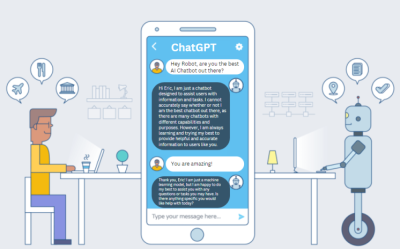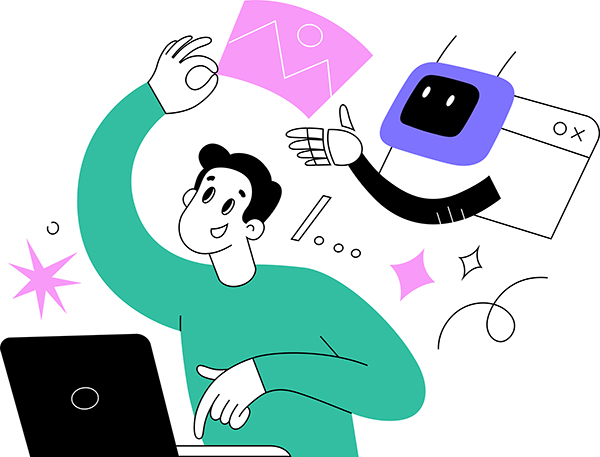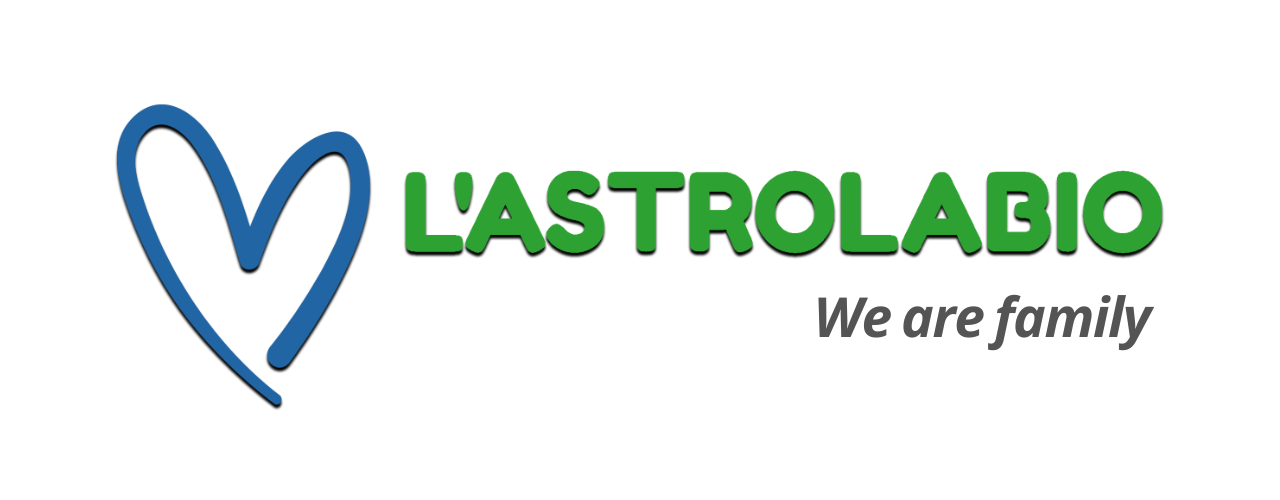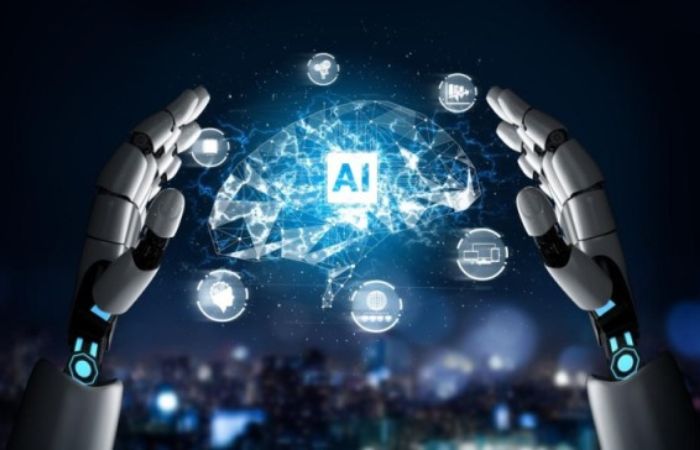In just a few short years, the use of Artificial Intelligence in education has wildly changed the classroom!
In classrooms where notebooks are being replaced by tablets and laptops, Artificial Intelligence in education is carving out an important role. As teachers, this gives us a unique opportunity: to harness the potential of this powerful technology and use it to improve how we teach and how our students learn.
The speed of AI’s evolution is astonishing. Chat platforms like ChatGPT are reaching millions of users, and education has quickly become one of the sectors most influenced by this change.

But how can we, as educators, use this technology wisely? How can we enrich our students’ learning experience without losing sight of the core values and principles that define good teaching?
AI promises to reshape how we learn and teach — but like any new tool, it comes with challenges. The key lies in understanding how to use it safely, ethically, and effectively.
And we’re not alone in this. Experts around the world are exploring how AI can improve education, from promoting equity to preventing misuse. The road may not be straightforward, but the opportunities are vast.
Indice dei contenuti
Artificial Intelligence as a partner for teachers
As we step into this new era, our mission as teachers remains the same: to provide students with the best possible education. With AI by our side, we now have more tools than ever to do so.
Teachers will always be irreplaceable in the classroom. Still, it’s true that even the most experienced educators can struggle to receive useful, detailed feedback that helps them refine their approach.
This is where AI can step in, offering new ways to support and strengthen teaching practice.
For example, AI can create virtual students that simulate real classroom behaviour. These digital learners can hesitate, ask follow-up questions, and even show confusion, just like real students.
AI tools can also provide live suggestions during lessons, such as which questions to ask next, or analyse classroom interactions afterwards to offer insight. You might discover, for instance, how long each student spoke during a session, or which questions generated the most engagement.
And beyond lesson delivery, AI can help teachers stay up to date with the latest research in their subject area or refresh their curriculum with new materials and approaches.
AI is rewriting the rules of education
Remember when calculators first entered classrooms? It felt revolutionary, and not everyone welcomed the change. Today, AI is sparking a similar debate: is it just another tool that helps students learn, or is it something that will fundamentally change how we learn altogether?
As teachers, we know the value of mastering the basics. Even if students use calculators daily, they still need to understand how to divide, multiply, and calculate by hand. Just as they need to write, not only to communicate but to think critically.
So, what happens when we introduce AI into the learning process?
Some argue that doing everything manually is no longer necessary. It may seem like a step backwards, but it could actually push education forward.
With AI, students are encouraged to think more deeply , not just to produce answers but to become editors and curators of their own learning. In this way, they act as architects of their education, pursuing more creative and ambitious goals with confidence.
Building a classroom free from judgment
Imagine a classroom where every student feels free to ask questions, express doubts, make mistakes, and try again, without fear of being judged. That could become a reality with the help of AI.
Teachers know how difficult it can be to convince students that there’s no such thing as a “stupid question.” Often, fear of embarrassment stops them from participating.
But what if students could receive instant, constructive feedback that’s free from bias or ridicule? AI can provide that, offering guidance without the emotional weight of peer judgment.
This opens up new ways to develop soft skills such as communication, critical thinking, and problem-solving, skills that are essential for personal and academic growth but often hard to teach effectively.
In this sense, AI can become a real-time tutor, offering support and encouragement while allowing students to experiment, make mistakes, and improve in a safe environment.
Towards more effective learning and assessment
We all agree that learning is a personal journey, and that lively discussion often brings subjects to life. But traditional teaching methods don’t always reflect this reality.
In a classroom, only one student can speak at a time, which limits the opportunity for everyone to contribute meaningfully. Wouldn’t it be extraordinary to have 35 personalised conversations at once?
AI can make this possible. Acting as a virtual assistant, it can facilitate more individualised and interactive learning experiences.
It can quickly identify each student’s strengths, suggest customised study paths, and even propose possible career directions based on their skills and interests.
Used thoughtfully, AI can help teachers provide a more personalised, responsive form of education — one that recognises every learner’s unique potential.
The risks and challenges of AI in education
AI is not a magic solution. It’s more like a luxury car: it can take us far, but it still needs maintenance, control, and care.
In the same way, using AI in education requires awareness and caution. Let’s look at some of the main challenges we need to consider.
AI and cultural diversity
As the saying goes, “variety is the spice of life.” Yet AI systems still struggle to grasp the full richness of human diversity.
Chatbots like ChatGPT are trained on vast amounts of data, but they don’t always capture the complexity of different cultural perspectives.
What does this mean in practice? It means that AI responses might not fully reflect the experiences, voices, or linguistic subtleties of students from varied backgrounds. This can make it harder to build a truly inclusive and supportive learning environment.
Educators must therefore remain attentive, ensuring that AI serves every student fairly and respectfully.

The quality of learning beyond speed
AI has transformed how we access knowledge. Its quick, accurate responses can be incredibly useful, but in education, speed is not always the goal.
True learning depends on curiosity, reflection, and depth. A good teacher doesn’t just deliver information, they provoke thought and encourage discovery.
If a student asks a complex scientific question, a chatbot might give a clear, concise answer. But will that answer spark genuine understanding? Probably not.
A human teacher, by contrast, might respond with further questions, guiding the student to think critically and explore different angles. That’s something AI, at least for now, can’t fully replicate.
Algorithms lack the intuition, empathy, and pedagogical instinct that make human teaching so powerful.
A persuasive speaker, but not always reliable
AI has an impressive ability to communicate clearly and convincingly. But sometimes, behind the eloquence, the facts fall short.
Imagine a chatbot explaining algebra with perfect phrasing and confident tone, only to arrive at the wrong answer. In that moment, the presentation loses all its value.
That’s why it’s vital to approach AI with discernment. Always check its answers, cross-reference sources, and use it alongside trusted educational materials.
AI can be a valuable teaching companion, but only when used thoughtfully and responsibly.
Technology and the motivation crisis
AI and new technologies have opened doors we couldn’t have imagined before. Yet with progress comes a risk, a potential drop in motivation among students.
Some may wonder whether the skills they’re learning today will still matter tomorrow. If an algorithm can code or solve equations faster, what’s left for them to master?
Such questions can cause uncertainty and even discourage effort. But it’s crucial to remember that AI can’t replace the human element.
Skills like critical thinking, creativity, empathy, and teamwork remain invaluable, and they can’t be automated.
Technology is a tool, not a replacement. Its value depends entirely on how we choose to use it.
Artificial Intelligence is a new chapter in education
AI’s role in education is still largely unexplored territory. What’s clear, though, is that the landscape is changing — and the time to act is now.
By acknowledging the risks and embracing the opportunities, we can use AI to make learning more engaging, inclusive, and effective.
Let’s explore this new frontier together, with the awareness that while AI can support us, it still needs our guidance, our knowledge, and above all, our humanity.





